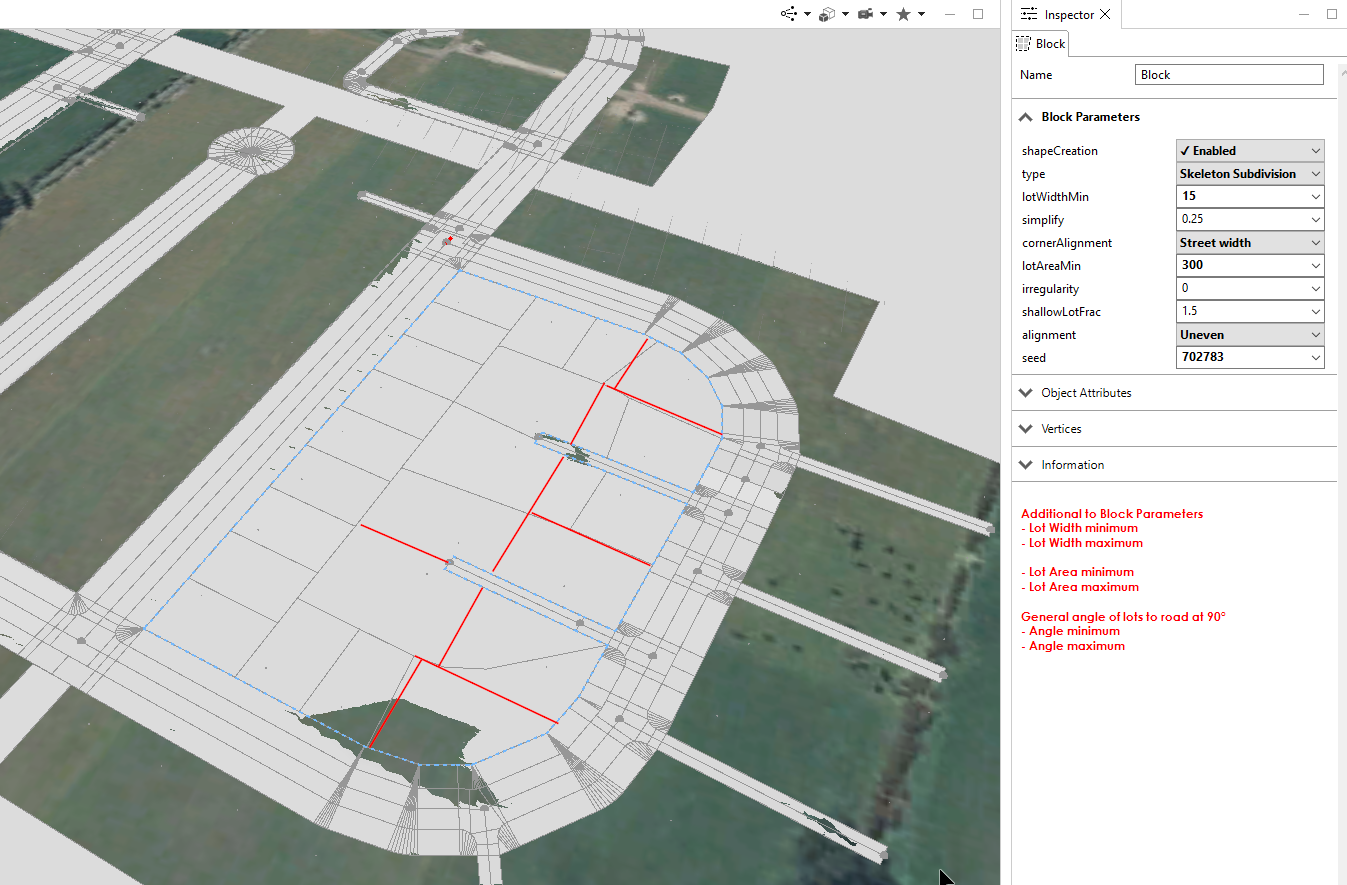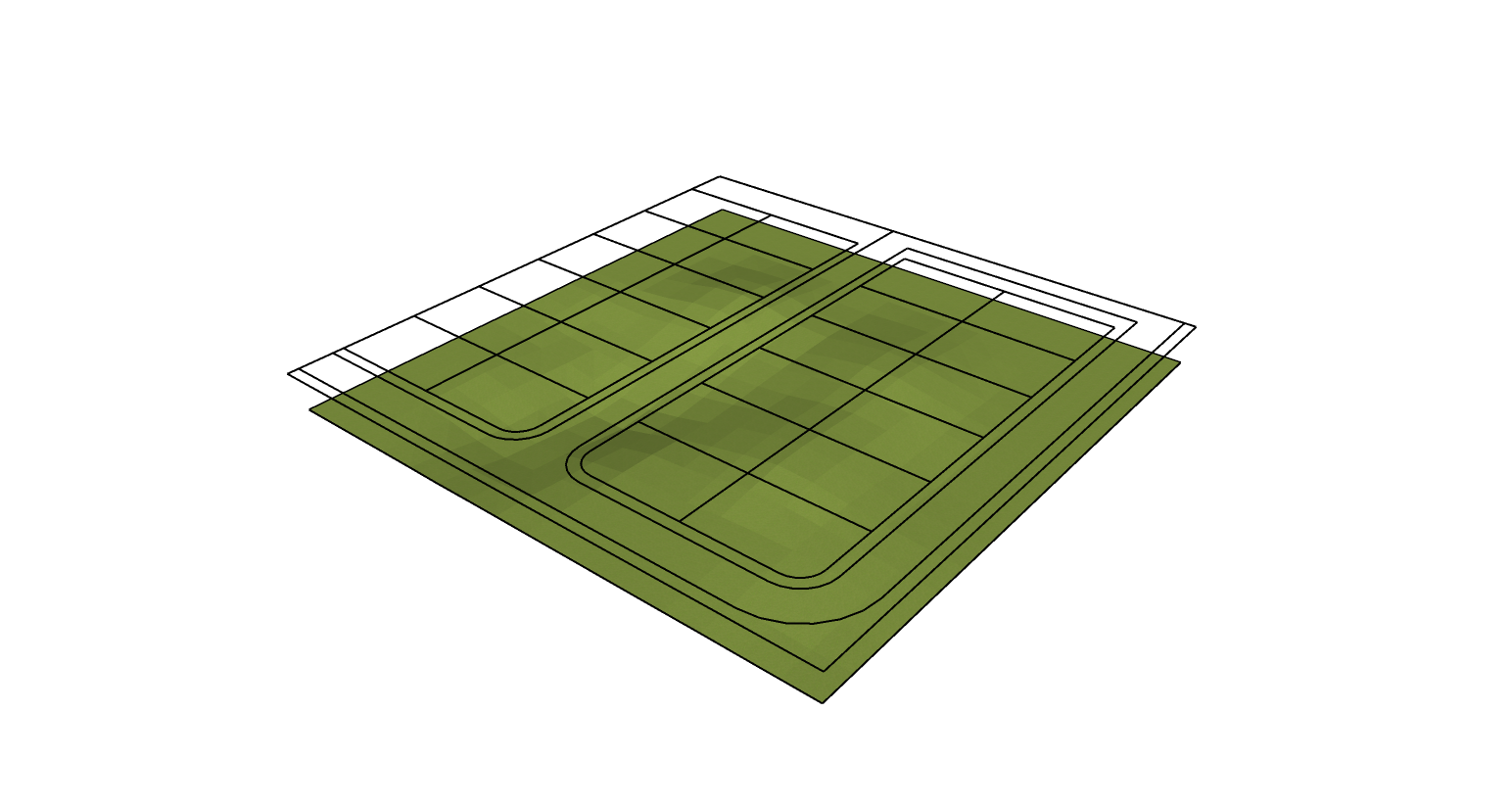- Home
- :
- All Communities
- :
- Products
- :
- ArcGIS CityEngine
- :
- ArcGIS CityEngine Questions
- :
- Road centreline design and reporting - assistance
- Subscribe to RSS Feed
- Mark Topic as New
- Mark Topic as Read
- Float this Topic for Current User
- Bookmark
- Subscribe
- Mute
- Printer Friendly Page
Road centreline design and reporting - assistance
- Mark as New
- Bookmark
- Subscribe
- Mute
- Subscribe to RSS Feed
- Permalink
We are a company in New Zealand working in the field of urban design, as well as surveying and engineering. Most of our jobs include the design of new subdivisions.
We have just started using City Engine as a visualisation tool, but as we discovered the reporting tools, we are starting to explore the full capabilities of the software.
Key items that we are after is to be able to use vertical geometry of road centrelines to work out approximate surface levels. The way this would work is:
Vertical Geometric Road Design
The road centreline levels can determine the boundary level based on a typical cross section road typology which will be written in the road rule:

In the road rule, we would like to incorporate the creation of the construction foundations of the different sections that make up the rule (service trench, footpath, berm etc). For example, It would create a shape under the berm for 300mm topsoil, under the footpath a shape of 100mm concrete, with 50mm base course. Under the carriageway it would create 50mm of asphalt, 150mm of base course with 250mm of sub-base course (for example).
With these volumes, we can use the reporting tool in the rule to calculate total cost.

If this is not possible to visually model, we can incorporate these depths in the formulas of the reporting tool, to get the volumes required for the length or area (of carriageway, footpath etc,).
Lot Layout
The subdivision lots are automatically created with a subdivision tool. However, the current capability in City Engine is very rough and will need more finesse and finetuning.

Currently the subdivision tool only has the option for minimum width and minimum area, but we would require a maximum parameter to be added. Additionally, the angle from which the lot boundary can come off the road should ideally be 90 degrees. Corner lots and back lots are somewhat problematic. Maybe a minimum and maximum angle can be added to the rule?
Earthworks
These lots are typically graded at 1 in 500 from the road boundary level mentioned earlier, which should be reflected in the creation of these lots in City Engine. The surface accuracy we are aiming for would be around the +/-100mm mark.

This 'design' graph would be imported to tie into an existing point (such as an existing road) at the right elevation (set in FME or ArcGIS) and the rules applied – to create the road and subsequent lot subdivision. These roads would also incorporate a specific angle such as 1:500 from the highest point to the lowest point (for stormwater purposes).

The existing ground surface would be aligned to the design and the cut and/or fill volumes calculated. The objective is to dynamically/iteratively adjust the centreline levels to balance the cut/fill earthworks volumes.
With these rules and reporting functions, we could very quickly get a cost estimate for a project, that will tell us the total cut and fill necessary, as well as the volume + cost of asphalt, topsoil, base course, sub-base course etc. for due diligence purposes. It does not need to be 100% accurate, but with a ~10%-15% margin is good enough.
3 Waters Infrastructure
The stormwater, wastewater and potable water supply are other design items influencing the lot and road levels. Potable supply is pressurised, so the grade of the land isn’t as critical. Stormwater and waste water reticulation is typically constructed by gravity systems.
A consideration influencing the design surface height (the height of the road surface) is the cover depth of gravity services such as sewer, which usually require a 1m depth in relation to the surface of the carriageway.
We would like to be able to use a 3d string on a grade to act as the gravity sewer/stormwater line and then compare the depth of this string to the surface design level. If this doesn’t meet the specified depth, an iterative process of lot level/road level adjustments would be required.
Next steps
Our question is: is this possible to do with City Engine (with help from ArcGIS)?
If it is, is there someone who can help us write the rules required?
- Mark as New
- Bookmark
- Subscribe
- Mute
- Subscribe to RSS Feed
- Permalink
Don't have a full answer just yet, nor the time to write the code (hired or otherwise), but:
1. Vertical Geometric Road Design - yes, this can be done. Adding angle to the street graph is possible, calculating the cut/fill is possible. For example, I did camber on a street graph (applied to the sidewalks) when I created a stream restoration code from the street graph. However, I think the street would look very "blocky" as beveling is not a straightforward rule in CE, though there are some techniques for that as well, but on a complex street graph those wouldn't work too well. But it could give you the reporting you seek.
2. Lot Layout - yes this can be done. You can do conditional statements on angles, or use a more effective split technique to get your desired results.
3. Earthworks - Adding height to the lot back-line would be a little bit more tricky. I would start by looking at the envelope operations and/or roof rules and try to incorporate them into lot layout/design and then work in the reporting.
4. Waters Infrastructure - I am envisioning several layers of geometry hopefully working off each other (e.g. lot center point to street sewer line). The shapes don't exactly have the tools to communicate to each other in CE the way they do in GIS. You might have to work back and forth between CE and GIS to do this.
- Mark as New
- Bookmark
- Subscribe
- Mute
- Subscribe to RSS Feed
- Permalink
vertical road design(ie non flat) is possible yet a lot of work if you switch all your design thinking paradigm in uvspace and insertAlongUv some templates with further scalings based on uv spans. crossroads are a bit problematic and tricky tho. However coupling this with smart templates (3d assets) with pre instrumented groups and materials then comping might give you a lot of possibilities.